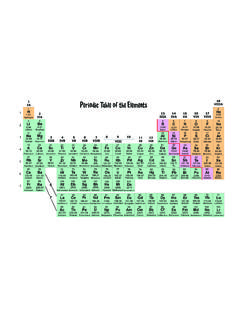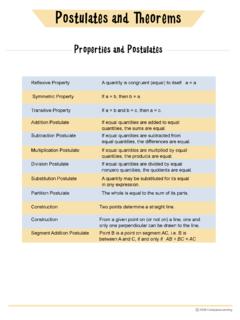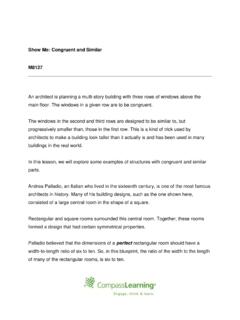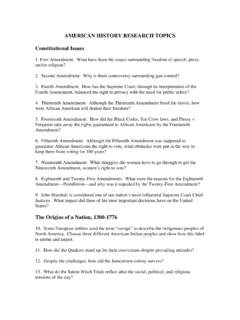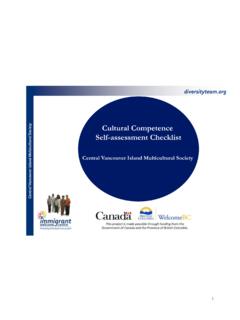Transcription of Farewell to Manzanar
1 1 Farewell to Manzanar A true story of japanese American experience during and after the World War II internment Jeanne Wakatsuki Houston and James D. Houston HOUGHTON MIFFLIN COMPANY BOSTON Copyright 1973 by James D. Houston Afterword copyright 2002 by Jeanne Wakatsuki Houston and James D. Houston All rights reserved. For information about permission to reproduce selections from this book, write to Permissions, Houghton Mifflin Company, 215 Park Avenue South, New York, New York 10003. Book design by Lisa Diercks The text of this book is set in Manticore. Library of Congress Cataloging-in-Publication Data Houston, Jeanne Wakatsuki. Farewell to Manzanar .
2 1. Houston, Jeanne Wakatsuki. 2. United States. War Relocation Center, Manzanar , Calif. 3. japanese in the United States. I. Houston, James D., joint author. II. Title. ISBN 0-618-21620-0 '72'73 73 11267 For permission to reprint copyrighted material the authors are grateful to the following publishers and copyright proprietors: Harms, Inc., for the lines from Don t Fence Me In on page 91: 1944 2 Harms, Inc. Copyright Renewed. All Rights Reserved. Used by permission of Warner Bros. Music. Mills Music, Inc., for the lines from Girl of My Dreams on pages 162 and 163: Copyright 1927 by Mills Music, Inc. Copyright Renewed 1955. Used by Permission.
3 Printed in the United States of America QUM 10 9 8 7 6 5 to the memory of Ko and Riku Wakatsuki and Woodrow M. Wakatsuki 3 Contents Foreword ix A Chronology xiii Terms Used in This Book xv Part 1 One What Is Pearl Harbor? 3 Two Shikata Ga Nai 9 Three A Different Kind of Sand 21 Four A Common Master Plan 25 Five Almost a Family 31 Six Whatever He Did Had Flourish 42 Seven Fort Lincoln: An Interview 54 Eight Inu 59 Nine The Mess Hall Bells 65 Ten The Reservoir Shack: An Aside 70 Eleven Yes Yes No No 73 Part 2 Twelve Manzanar , 85 Thirteen Outings, Explorations 93 Fourteen In the Firebreak 105 Fifteen Departures 109 Sixteen Free to Go 113 Seventeen It s All Starting Over 120 4 Eighteen Ka-ke, Near Hiroshima.
4 April 1946 128 Nineteen Re-entry 134 Twenty A Double Impulse 141 Twenty-One The Girl of My Dreams 152 Part 3 Twenty-Two Ten Thousand Voices 167 Afterword 185 5 Foreword When we first considered writing a book about the internment of japanese Americans during World War Two, we told a New York writer friend about the idea. He said, It s a dead issue. These days you can hardly get people to read about a live issue. People are issued out. I know it, my husband said. I m issued out myself. The issue isn t what we want to write about. Everybody knows an injustice was done. How many know what actually went on inside?
5 If they think anything, they think concentration camps. But that conjures up Poland and Siberia. And these camps weren t like that at all. So we set out to write about the life inside one of those camps-- Manzanar --where my family spent three and a half years. We began with a tape recorder and an old 1944 yearbook put together at Manzanar High School. It documented the entire camp scene--the graduating seniors, the guard towers, the Judo pavilion, the creeks I used to wade in, my family s barracks. As the photos brought that world back, I began to dredge up feelings that had lain submerged since the forties. I began to make connections I had previously been afraid to see.
6 It had taken me twenty-five years to reach the point where I could talk openly about Manzanar , and the more I talked, the clearer it became that any book we wrote would have to include a good deal more than day-to-day life inside the compound. To tell what I knew and felt about it would mean telling something about our family before the war, and the years that followed the war, and about my father s past, as well as my own way of seeing things now. Writing it has been a way of coming to terms with the impact these years have had on my entire life. 6 To complete this book we have had to rely on a good deal besides my own recollections. Many people helped make it possible, more than we can name here.
7 We are especially grateful to all the members of the family who shared their memories, and to these friends: Jack and Mary Takayanagi, Don Tanzawa, and Mary Duffield. We are indebted to the numerous writers and researchers whose works have been indispensable to our own perspective on the period. And we thank the University of California at Santa Cruz for a research grant that made it possible to begin. Because this is a true story, involving an extraordinary episode in American history, we have included a list of dates and laws we hope will make it easier to follow. It needs some historical context. But this is not political history. It is a story, or a web of stories--my own, my father s, my family s--tracing a few paths, out of the multitude of paths that led up to and away from the experience of the internment .
8 -- Jeanne Wakatsuki Houston, Santa Cruz, California, March 1973 A Chronology 1869 The first japanese to settle on the mainland arrive at Gold Hill, near Sacramento, California. 1870 Congress grants naturalization rights to free whites and people of African descent, omitting mention of Asian races. 1886 The japanese government lifts its ban on emigration, allowing its citizens for the first time to make permanent moves to other countries. 1911 Bureau of Immigration and Naturalization orders that declarations of intent to file for citizenship can only be received from whites and from people of African descent, thus allowing courts to refuse naturalization to the japanese .
9 7 1913 Alien Land Bill prevents japanese aliens from owning land in California. 1924 Congress passes an Immigration Act stating that no alien ineligible for citizenship shall be admitted to the This stops all immigration from Japan. December 7, 1941 Surprise attack on Pearl Harbor by the japanese . February 19, 1942 President Roosevelt signs Executive Order 9066, giving the War Department authority to define military areas in the western states and to exclude from them anyone who might threaten the war effort. March 25, 1942 Evacuees begin to arrive at Manzanar Camp, in Owens Valley, California, the first of the permanent camps to open. August 12, 1942 Evacuation completed, 110,000 people of japanese ancestry removed from the West Coast to ten inland camps.
10 December 18, 1944 Supreme Court rules that loyal citizens cannot be held in detention camps against their will, the first major step toward the closing of the camps. August 14, 1945 Japan surrenders, ending World War II. November 21, 1945 Manzanar Camp officially closes. June 1952 Congress passes Public Law 414, granting japanese aliens the right to become naturalized citizens. Terms Used in This Book Issei The first generation. The Issei were born in Japan. Most of them immigrated to the United States between 1890 and 1915. 8 Nisei The second generation, the children of the Issei. American citizens by birth, almost all Nisei were born before the Second World War.
